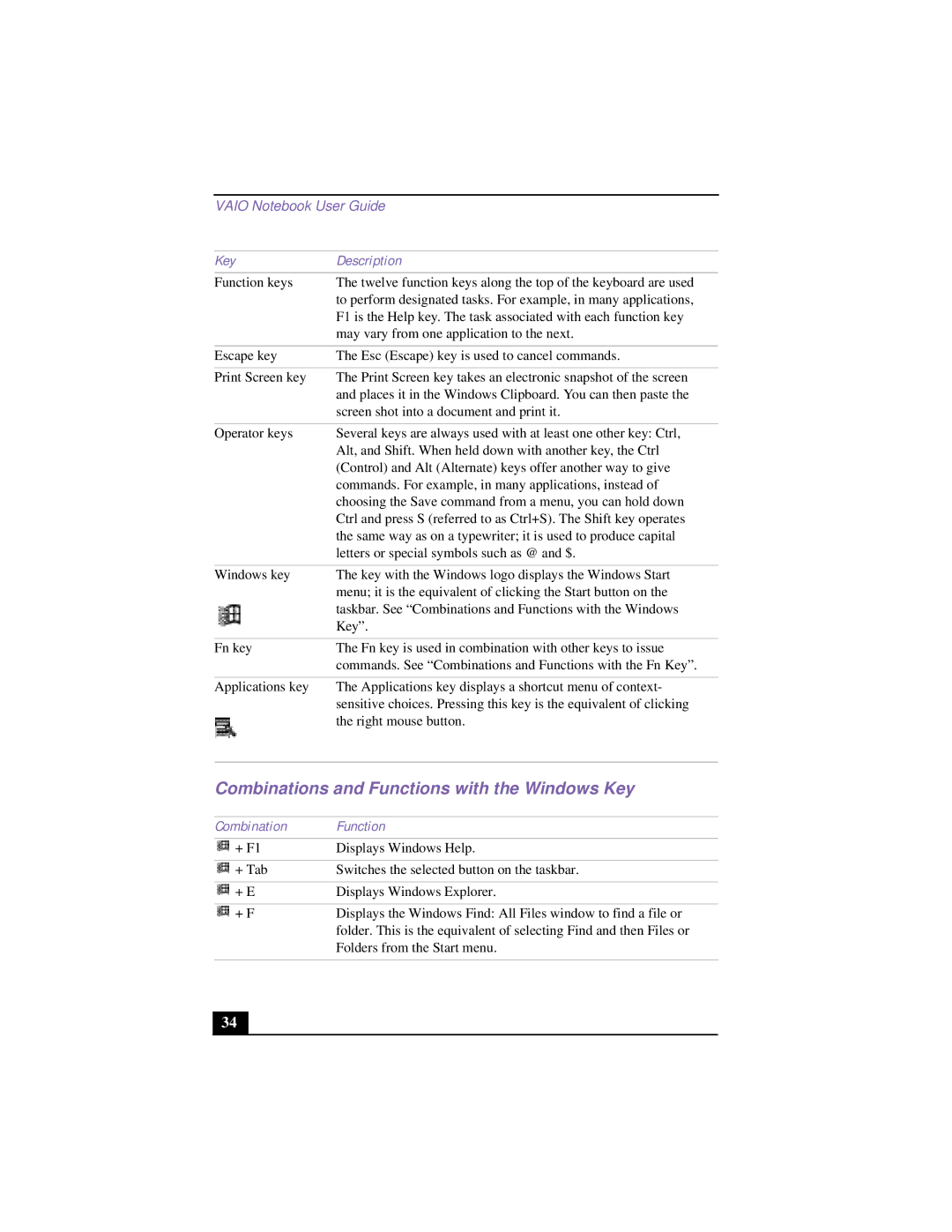
VAIO Notebook User Guide
Key | Description |
Function keys | The twelve function keys along the top of the keyboard are used |
| to perform designated tasks. For example, in many applications, |
| F1 is the Help key. The task associated with each function key |
| may vary from one application to the next. |
|
|
Escape key | The Esc (Escape) key is used to cancel commands. |
|
|
Print Screen key | The Print Screen key takes an electronic snapshot of the screen |
| and places it in the Windows Clipboard. You can then paste the |
| screen shot into a document and print it. |
|
|
Operator keys | Several keys are always used with at least one other key: Ctrl, |
| Alt, and Shift. When held down with another key, the Ctrl |
| (Control) and Alt (Alternate) keys offer another way to give |
| commands. For example, in many applications, instead of |
| choosing the Save command from a menu, you can hold down |
| Ctrl and press S (referred to as Ctrl+S). The Shift key operates |
| the same way as on a typewriter; it is used to produce capital |
| letters or special symbols such as @ and $. |
|
|
Windows key | The key with the Windows logo displays the Windows Start |
| menu; it is the equivalent of clicking the Start button on the |
| taskbar. See “Combinations and Functions with the Windows |
| Key”. |
|
|
Fn key | The Fn key is used in combination with other keys to issue |
| commands. See “Combinations and Functions with the Fn Key”. |
|
|
Applications key | The Applications key displays a shortcut menu of context- |
| sensitive choices. Pressing this key is the equivalent of clicking |
| the right mouse button. |
Combinations and Functions with the Windows Key
Combination | Function |
+ F1 | Displays Windows Help. |
|
|
+ Tab | Switches the selected button on the taskbar. |
|
|
+ E | Displays Windows Explorer. |
|
|
+ F | Displays the Windows Find: All Files window to find a file or |
| folder. This is the equivalent of selecting Find and then Files or |
| Folders from the Start menu. |
|
|
34
